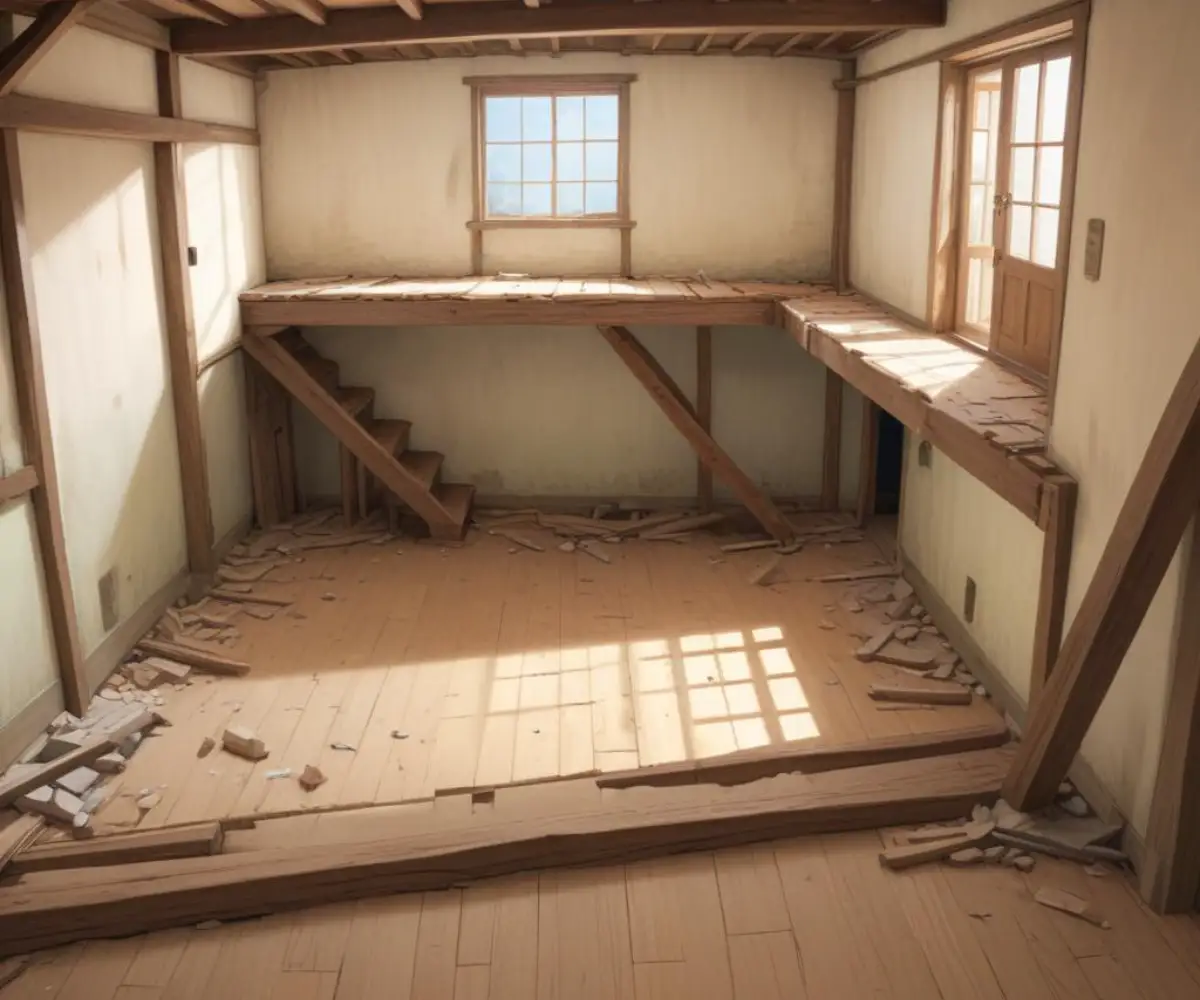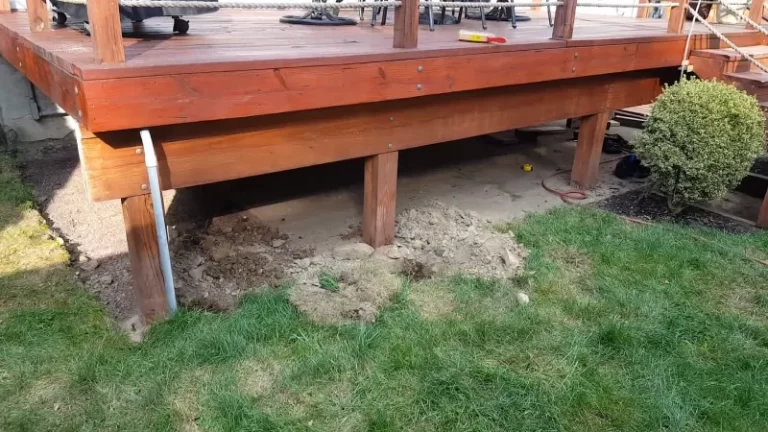Cost to Remove Staircase: More Than You Think?
That awkward, bulky staircase—it cuts your living room in half, blocks the light, and feels like a total waste of precious square footage. You’ve dreamed of an open-concept space, but the very structure designed to connect your home is now the biggest obstacle. Removing it seems like the obvious solution, but this project is often far more complex and costly than homeowners initially imagine.
The problem isn’t just about demolition. It involves navigating complex structural challenges, adhering to strict building codes, and ensuring the safety and integrity of your entire home. From discovering that the staircase is supporting a main wall to dealing with the messy aftermath of flooring and ceiling repair, the hidden variables can quickly turn a straightforward idea into a logistical and financial headache.
You'll Learn About
Why Even Consider Removing a Staircase?
Before diving into the costs, it’s important to understand the common motivations behind such a significant renovation. Homeowners typically undertake this project to solve a specific problem, whether it’s functional, aesthetic, or related to accessibility. Understanding your “why” is the first step in planning a successful removal.
For many, the goal is to achieve an open-plan living area. Older homes, in particular, often feature centrally located staircases that create chopped-up, inefficient layouts. Removing or relocating the stairs can dramatically improve flow and create a more modern, spacious feel. In other cases, the existing staircase may be dangerously steep, too narrow, or simply worn out, posing a safety risk that warrants a complete overhaul.
Finally, accessibility is a growing concern. For those facing mobility challenges, a traditional staircase can be a significant barrier. Thinking about how to make a split-level home handicap accessible often involves exploring alternatives like installing a home elevator, which would require removing the existing stairs.
The Hidden Costs: What REALLY Determines the Price of Staircase Removal?
The sticker shock associated with staircase removal often comes from underestimating the project’s scope. The cost isn’t just for the demolition itself; it’s a combination of labor, structural work, materials, and finishing. The final bill can range from a few hundred dollars for a simple, non-structural removal to tens of thousands for a complex relocation.
Let’s break down the key factors that will influence your total cost.
Labor Costs: The Biggest Slice of the Pie
Labor is almost always the most significant expense. You’re not just paying for a demolition crew; you’re paying for the expertise of carpenters, structural engineers, and finishers. Professional contractors typically charge between $50 and $100 per hour, and a full removal and replacement project can take anywhere from a few days to several weeks.
The complexity of the job dictates the time required. A simple, straight staircase that isn’t tied into the home’s primary structure will be on the lower end of the cost spectrum. However, a curved or spiral staircase, or one that is integrated with walls and other structural elements, will require more meticulous and time-consuming work.
Staircase Type and Materials
The materials of your existing staircase also play a role. Heavy concrete or metal staircases are more difficult and costly to demolish and dispose of than standard wooden ones. Demolishing metal stairs, for example, could add $1,000 to $2,000 to your bill right from the start.
Professionals often disassemble stairs piece by piece rather than using a sledgehammer to avoid damaging the surrounding structure. This careful process takes more time and skill, which is reflected in the labor costs.
The Big Question: Is it Load-Bearing?
This is the single most critical factor determining the cost and complexity of your project. If the staircase or an adjacent wall is load-bearing, it means it’s supporting the weight of the floor or roof above. Removing it without proper reinforcement could lead to catastrophic structural failure.
You will need to hire a structural engineer to assess the situation. An initial consultation and inspection can cost between $350 and $800. If structural modifications are needed, the engineer will need to create plans for new support beams or columns, which can add another $500 to $3,000 to the cost. The installation of these new supports is a major job that significantly increases labor and material expenses.

Making Good the Damage: Patching and Finishing
Once the staircase is gone, you’re left with a large hole in the floor and ceiling, along with damaged walls. The cost to repair this “infill” area is substantial. You’ll need to install new floor joists, which can cost $100 to $300 per joist, and then add new subflooring and finished flooring.
The same goes for the ceiling below and the surrounding walls. This often involves framing, drywall installation, taping, and painting. If you’ve ever wondered how to get drywall into basement for a project, you’ll appreciate the logistics involved in bringing in new materials and finishing them seamlessly.
Debris Disposal: Getting Rid of the Old
Finally, you have to account for the disposal of the old staircase. This usually requires renting a dumpster or hiring a junk removal service. Depending on the size of the staircase and the materials, this can add a few hundred dollars to the total project cost.
Cost Breakdown: A Realistic Look at Your Budget
To give you a clearer picture, here is a table outlining the potential costs for a complete staircase removal project that requires structural work. Keep in mind that these are estimates and can vary widely based on your location, the specifics of your home, and the contractor you hire.
| Expense Item | Low-End Cost Estimate | High-End Cost Estimate |
|---|---|---|
| Staircase Demolition & Removal | $300 | $2,000 |
| Structural Engineer Consultation & Plans | $500 | $3,300 |
| Structural Work (e.g., new beams, posts) | $1,000 | $5,000+ |
| Floor Joist & Subfloor Repair/Installation | $500 | $2,000 |
| Ceiling & Drywall Repair | $400 | $1,500 |
| Flooring Installation (to patch area) | $300 | $1,000 |
| Debris Disposal (dumpster rental) | $200 | $500 |
| Estimated Total Project Cost | $3,200 | $15,300+ |
As you can see, a project that starts with a simple demolition quote of $300 to $2,000 can easily escalate. If the project involves not just removing but relocating the stairs, the total cost, including the new staircase, can range from $3,000 to over $10,000.
DIY vs. Hiring a Pro: A Cost-Benefit Analysis
Tackling a staircase removal as a DIY project is a tempting thought for saving on labor costs. However, this is one area where the risks often far outweigh the potential savings. Unless you are a licensed contractor with a deep understanding of structural engineering, this is not a job for amateurs.
When DIY is a HUGE Mistake
Never attempt to remove a staircase if you suspect it is load-bearing. The consequences of a mistake are not just cosmetic; you could compromise the structural integrity of your entire house, leading to sagging floors, cracked walls, or even a collapse. The cost to repair such damage would dwarf any initial savings.
Building codes for staircases are also incredibly strict regarding rise, run, headroom, and railing requirements. A DIY job that isn’t up to code will have to be torn out and redone, and it could create major problems when you try to sell your home. For complex tasks like this, professional expertise is essential.
Why a Professional is Almost Always Worth The Investment
Hiring a qualified general contractor and a structural engineer ensures the job is done safely and correctly. They will secure the necessary permits, perform a thorough structural assessment, and execute the removal and repair work to professional standards. This guarantees the safety of your family and protects the long-term value of your home.
Frequently Asked Questions About Staircase Removal
Homeowners often have similar questions when considering this type of renovation. Here are answers to some of the most common queries.
How long does it take to remove a staircase?
The timeline depends entirely on the project’s complexity. A simple, non-structural demolition might take a day or two. However, a full removal that includes structural work, installing new joists, and finishing the floors and ceilings can take anywhere from one to three weeks.
Do I need a permit to remove a staircase?
Almost certainly, yes. Because staircase removal affects the structure and safety of your home, you will likely need a building permit from your local authority. Your contractor should handle the process of obtaining the necessary permits, and the work will be subject to inspection.
What are the alternatives to complete removal?
If the high cost or complexity of a full removal is prohibitive, you have other options. For accessibility issues, installing a stair lift can be a more affordable solution, with costs typically ranging from $2,000 to $9,000. Aesthetically, you could remodel the existing staircase by replacing balusters, refinishing treads, or painting, which can transform its look for a fraction of the cost.

